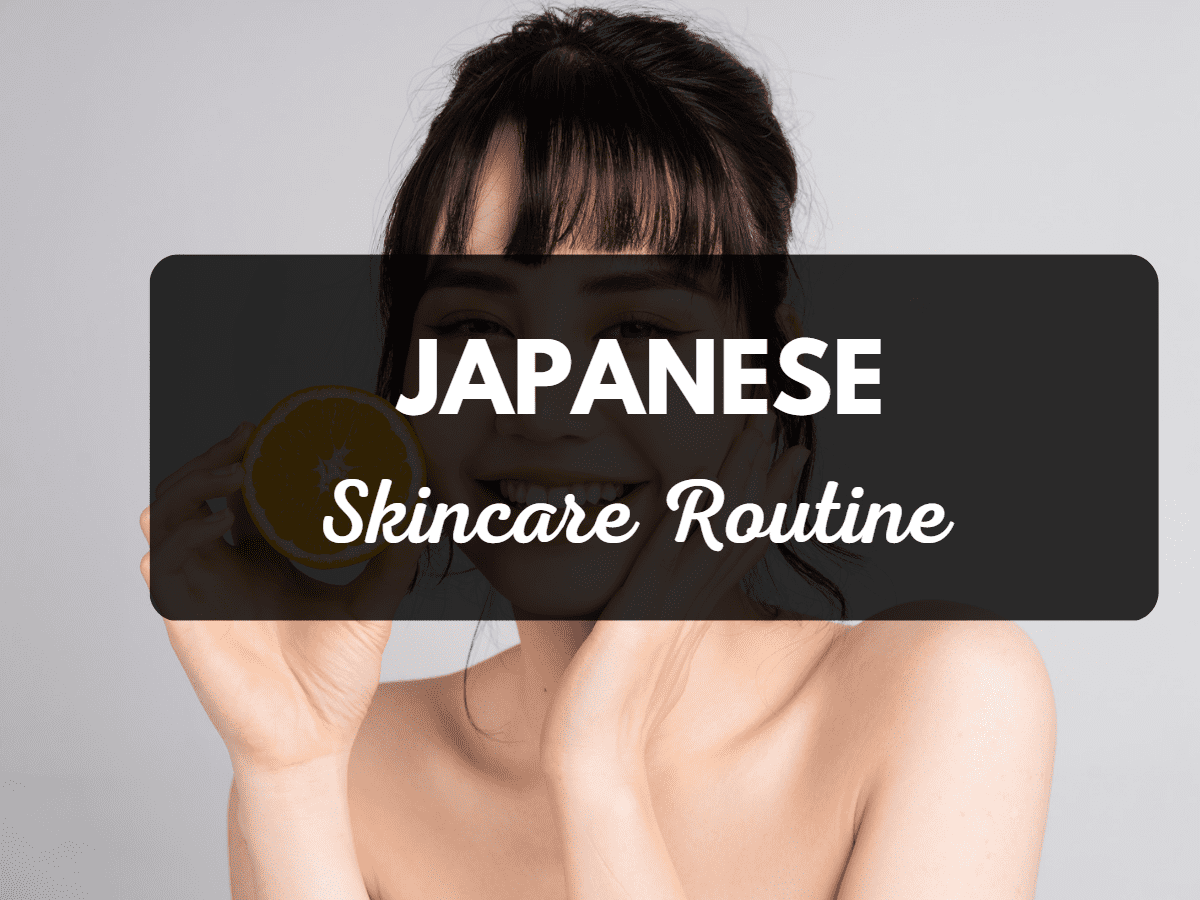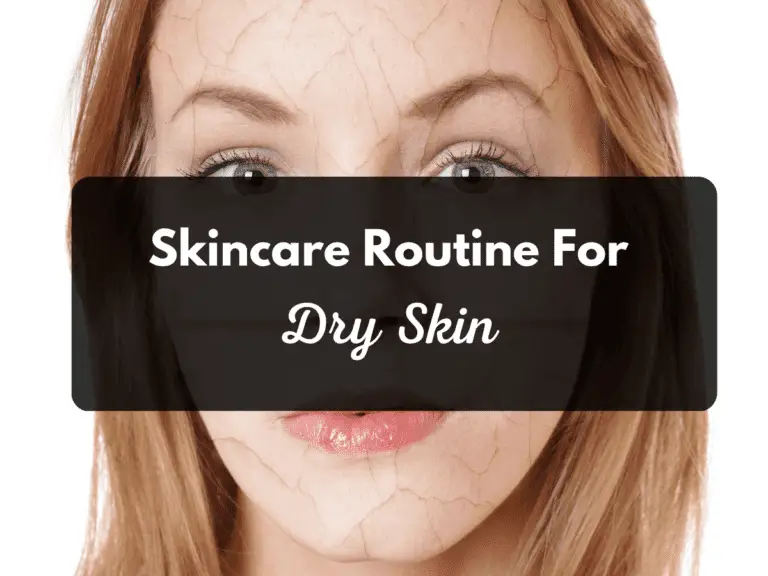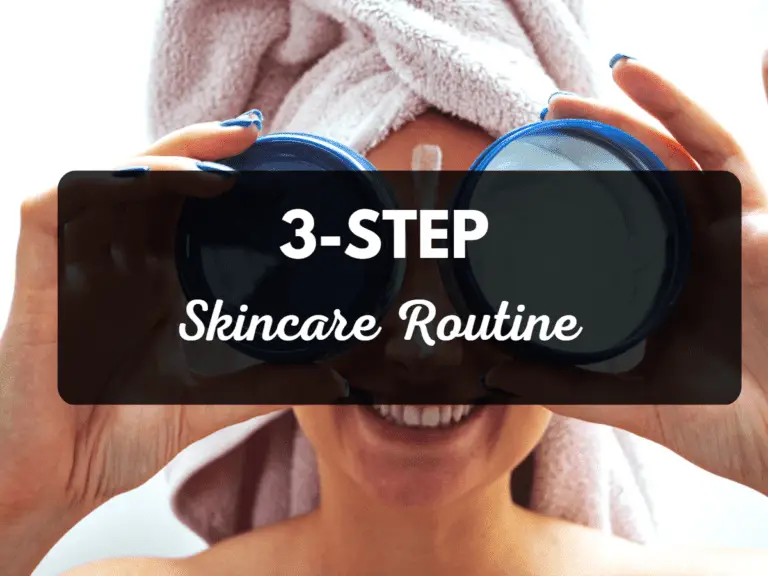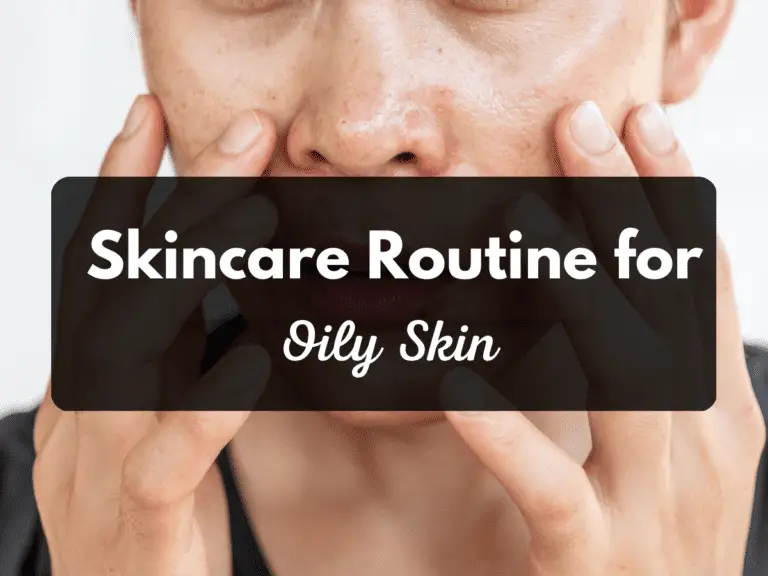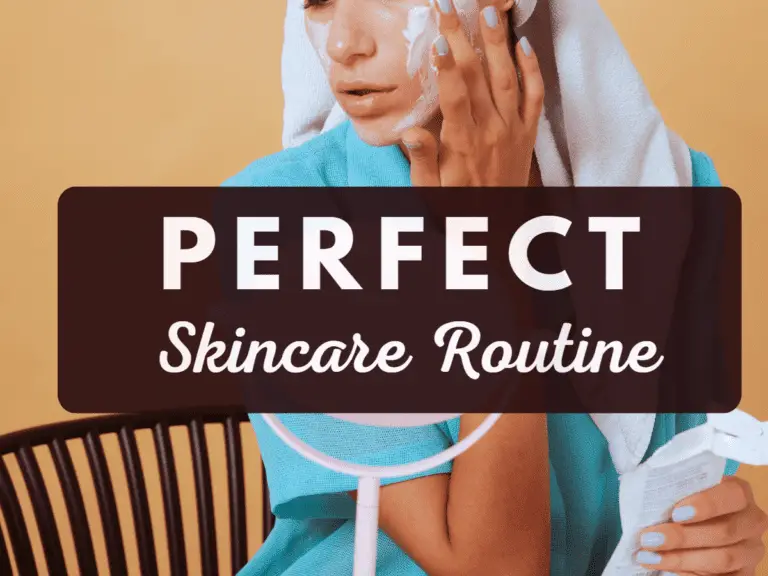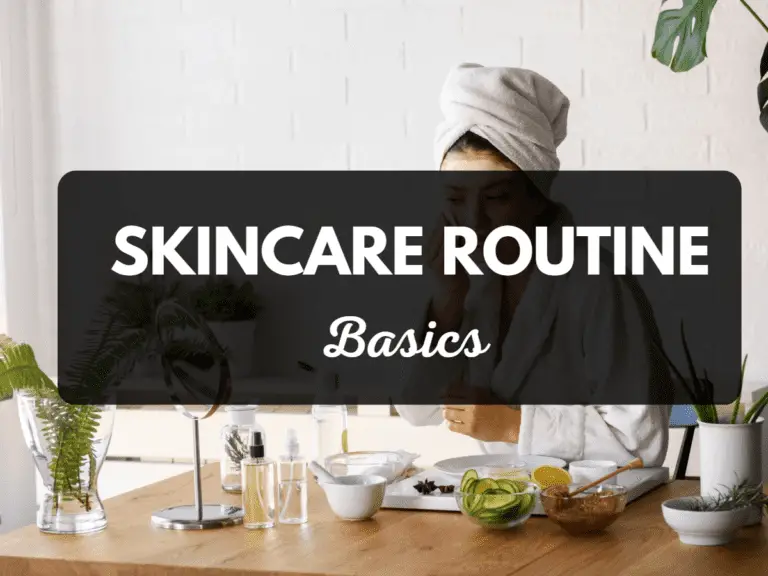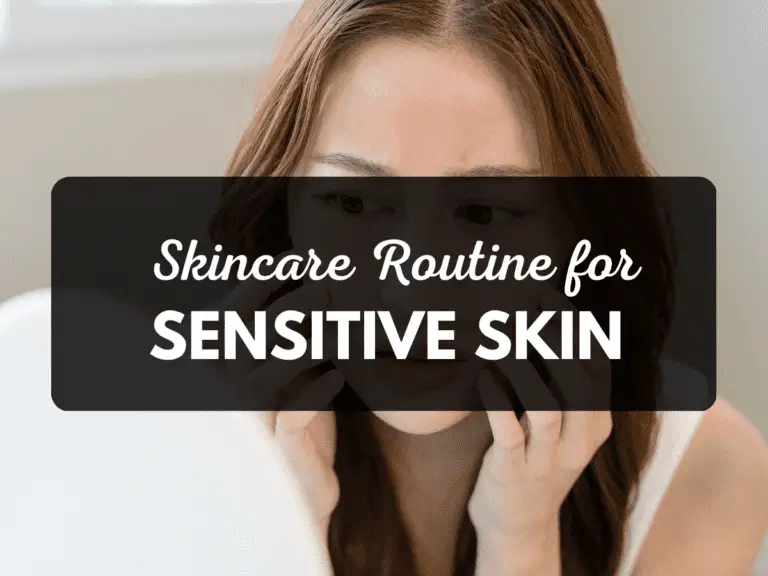Japan has a long-standing reputation for creating innovative beauty products.
And Japanese skincare routines are known for their effectiveness in achieving radiant, flawless skin.
In this blog post, I’ll walk you through the ins and outs of the Japanese skincare routine and share some tips on incorporating it into your daily skincare routine.
Let’s dive right In!
How do the Japanese get glass skin?
The Japanese are renowned for their clear, flawless skin. So, what’s their secret?
Well, it’s not just about using high-end skin care products. Japanese people believe that clear skin starts from within. That’s right; a healthy lifestyle plays a crucial role in achieving clear skin.

Here are some practices that the Japanese follow:
- Diet: The Japanese diet is rich in seafood, vegetables, and other nutrient-dense foods that provide the body with essential vitamins and minerals. This nutrient-rich diet helps to nourish the skin from the inside out.
- Sun protection: The Japanese are vigilant about protecting the skin from the sun. They often wear hats, carry parasols, and use high-SPF sunscreens to prevent sun damage.
- Consistent skincare rituals: The Japanese have a meticulous skincare routine that involves multiple steps and focuses on deep cleansing, hydration, and nourishment for the skin. This commitment to skincare ensures that the skin is kept in top condition.
- Natural ingredients: The Japanese have a long history of using natural ingredients in their skincare products, such as green tea, rice bran, and sake. These ingredients are rich in antioxidants and other beneficial compounds that can help to improve skin health.
- Prevention: The Japanese focus on preventing skin issues rather than just treating them. They believe in taking a proactive approach to skincare rather than waiting for problems to arise.
Japanese skincare routine day and night
Japanese Morning Skincare Routine
Step 1: Cleansing
As we all know, the first step in any skincare routine is obviously cleansing, and the Japanese have their unique approach. Japanese cleansing products are gentle, fragrance-free, and formulated to remove impurities and excess oil without stripping the skin’s natural oils.
Pro-tip: For oily or acne-prone skin, opt for an oil-based cleanser with tea tree oil or salicylic acid to reduce inflammation and unclog pores.
Step 2: Toning
After cleansing, toning helps to rebalance your skin’s pH levels and prepares it for the next steps in your routine. Japanese toners are lightweight and refreshing and usually contain nourishing ingredients such as green tea, sake, or rice bran.
Pro-tip: For dry or sensitive skin, look for toners that contain hyaluronic acid or aloe vera to soothe and hydrate your skin.
Step 3: Essence
Essence is a hydrating and nourishing liquid that penetrates deeply into your skin, delivering active ingredients to the areas where they’re most needed. Japanese essences are lightweight and contain high concentrations of natural ingredients, such as fermented rice, seaweed, or sake.
Pro-tip: Look for essences that contain ingredients like fermented rice or soy for added nourishment and brightening benefits.
Step 4: Serum:
Serums are lightweight, concentrated formulas that target skin concerns like fine lines, wrinkles, or hyperpigmentation. Serums also help to hydrate and nourish the skin.
Pro-tip: Look for serums that contain ingredients like vitamin C or niacinamide for added brightening benefits.
Step 5: Eye cream (optional)
Japanese eye creams are formulated to be gentle and nourishing with ingredients.
For dark circles, look for eye creams that contain caffeine or vitamin K to help reduce inflammation and improve blood flow or green tea for added depuffing benefits.
Pro-tip: You can use face moisturizer around your eyes if you don’t have any skin concerns around your eyes.
Step 6: Moisturizer
This step locks moisture. Japanese moisturizers are formulated to be lightweight, hydrating, and fast-absorbing.
Pro-tip: Look for moisturizers that contain ingredients like ceramides or hyaluronic acid for added hydration and barrier protection.
For oily or combination skin, look for oil-free moisturizers that contain niacinamide or salicylic acid to help regulate oil production.
Step 7: Sunscreen
Any skincare routine is incomplete without sunscreen, and Japanese sunscreens are among the best in the world. Japanese sunscreens are lightweight, fast-absorbing, and provide broad-spectrum protection against UVA and UVB rays.
Pro-tip: Reapply your sunscreen every two hours if you’re spending time outdoors or sweating.
Do you need to follow all these steps?
While following a Japanese morning skincare routine with 7 steps can benefit your skin, it’s unnecessary to follow all of these steps every day.
Finding an affordable skincare routine that works for your skin type, concerns, time, and goals is important.
Let’s say you have a busy schedule or prefer a simpler routine. You can opt for 3 to 5 simple skincare steps. The key is to choose multitasking products that can perform multiple functions and save you time.
For example, a moisturizer containing sunscreen can provide hydration and sun protection in one step.
Pro-tip: It’s important to be consistent with your skincare routine, regardless of how many steps you choose to include. Consistency is key to achieving healthy, radiant skin.

Japanese 10-step skincare routine
Step 1: Remove makeup with an oil-based cleanser
Removing makeup is an essential step in any skincare routine. Start with an oil-based cleanser to dissolve makeup and impurities.
Pro-tip: Double cleansing with a foam-based cleanser after an oil-based cleanser can provide a deeper clean.
Step 2: Cleanse with a Water-based cleanser
After removing makeup, use a water-based cleanser to cleanse the skin of any remaining dirt and oil.
Pro-tip: Opt for a gentle, low-pH cleanser if you have dry or sensitive skin.
Step 3: Exfoliate (1-2 times a week).
Use a gentle exfoliator 1-2 times a week.
Pro-tip: Avoid over-exfoliating, as it can damage the skin’s protective barrier.
Step 4: Apply a sheet mask (1-2 times a week)
Sheet masks are an excellent way to provide intense hydration and nourishment to the skin. They come in various formulations and can address different skin concerns, from dryness to hyperpigmentation.
Pro-tip: Choose a sheet mask with ingredients that target your specific skin concerns, such as hyaluronic acid for hydration or vitamin C for brightening.
Step 5: Apply toner (optional)
Toner can be an extra nourishing product in your skincare routine.
Pro-tip: Choose an alcohol-free toner to avoid drying out the skin. Focus on ingredients in the toner as per your skin type and concerns.
Step 6: Apply an essence (optional)
Essences are lightweight, water-based products that deliver nutrients and hydration to the skin. They help to improve the skin’s texture and provide a glowing complexion.
Pro-tip: Look for an essence that contains hyaluronic acid, which can help to boost hydration levels in the skin.
Step 7: Apply a serum
Serums are concentrated products that target and treat specific skin concerns.
Pro-tip: Choose a serum that contains antioxidants, such as vitamin C or green tea extract, to protect the skin from environmental stressors.
Step 8: Apply an eye cream (optional)
Apply an eye cream to nourish and hydrate this area.
Pro-tip: Choose an eye cream that contains caffeine to help reduce puffiness and dark circles.
Step 9: Apply a moisturizer
Moisturizer is essential to lock in hydration and keep the skin soft and supple.
Pro-tip: Choose a moisturizer appropriate for your skin type, whether oily, dry, or combination.
Step 10: Apply a sleeping mask (1-2 times a week)
A sleeping mask is a nourishing treatment left on the skin overnight to hydrate and repair the skin.
Pro-tip: Look for a sleeping mask that contains ingredients like niacinamide, which can help to brighten the skin and even out skin tone.
Remember, not all of these steps are necessary for everyone. You should tailor the routine to your specific skin type and concerns. But incorporating elements of the Japanese skincare routine, like focusing on hydration and natural ingredients, can lead to clearer and more radiant skin.
Japanese skincare routine home remedies
You’ll love these Japanese home remedies if you’re interested in natural skin care. Here are some popular ones:
- Rice water: This is the starchy water left over after rinsing rice. Japanese people use it as a toner to brighten and hydrate the skin.
- Green tea: Green tea is highly antioxidants and has anti-inflammatory properties, making it an excellent ingredient for reducing redness and inflammation. Japanese people use it as a face mask or apply it with a cotton pad to the skin.
- Camellia oil: This is a popular ingredient in Japanese skin care products. You can also use it as a facial oil to hydrate and nourish the skin.
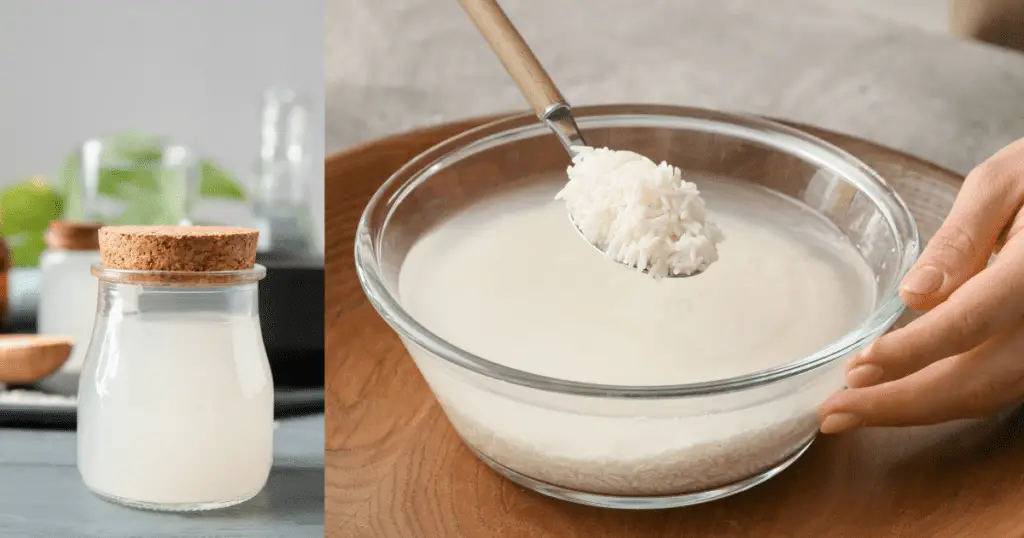
Japanese Diet Tips For healthy and Glowing Skin
Japan is renowned for its beauty secrets, and Japanese women are known for their flawless, radiant skin. Here are some Japanese diet tips that can help you achieve healthy and glowing skin:
The Japanese have long been admired for their flawless skin, and much of this is attributed to their diet. Here are some Japanese diet tips for flawless skin:
- Eat plenty of fish: Fish is an excellent source of omega-3 fatty acids, which are important for healthy skin. The Japanese consume a lot of fish, especially oily fish like salmon and mackerel.
- Incorporate green tea: Green tea is high in antioxidants and has anti-inflammatory properties, making it ideal for maintaining clear, youthful skin. The Japanese often drink green tea with meals and as a daily ritual.
- Consume fermented foods: Fermented foods such as miso, natto, and kimchi are a staple in the Japanese diet. These foods are rich in probiotics and promote healthy gut bacteria, which can improve overall skin health.
- Choose nutrient-dense foods: The Japanese diet emphasizes whole, nutrient-dense foods like vegetables, seaweed, and tofu. These foods provide essential vitamins and minerals that are important for skin health.
- Limit sugar and processed foods: The Japanese diet is low in sugar and processed foods, which can cause inflammation and breakouts. Instead, they focus on natural, unprocessed foods.
- Practice portion control: The Japanese practice portion control, which maintains a healthy weight and prevents overeating. Overeating can cause inflammation and breakouts.
The Japanese diet emphasizes whole, fresh, and minimally processed foods, which can help promote overall health and radiant skin.
Japanese body care routine
Finally, let’s talk about the Japanese body care routine.
Here are some practices they follow:
Dry brushing involves using a brush with natural bristles to exfoliate the skin and improve circulation.
Bathing: Japanese people love taking baths and often add ingredients like green tea or sea salt to their baths for added benefits.
Moisturizing: Japanese people use moisturizers and body oils to keep their skin hydrated and soft.
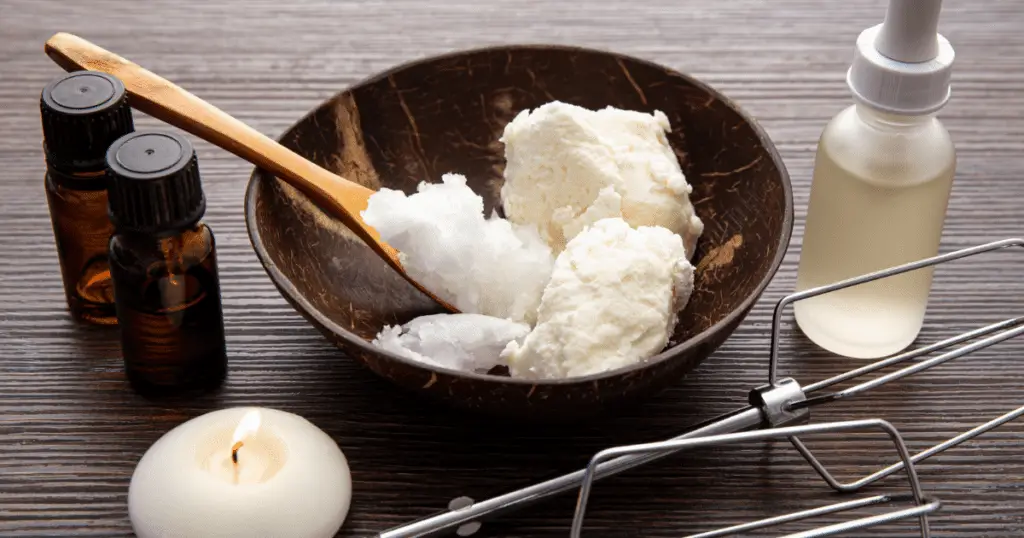
Japanese skincare routine vs. Korean
You may have heard of the Korean skincare routine, which is also known for its extensive steps and use of innovative ingredients.
So, what’s the difference between Japanese and Korean skincare routines?
While both routines focus on achieving clear and radiant skin, the Japanese routine focuses on simplicity and using natural ingredients.
In contrast, the Korean routine is more focused on innovation and using cutting-edge technology.
For example, the Korean routine often includes steps like using a sheet mask or a product with snail mucin, known for its skin-regenerating properties.
At the end of the day, both routines can be effective, and it’s all about finding what works well for your skin type and concerns.
Key takeaway
Incorporating Japanese skincare elements into your daily routine can give you clear and more radiant skin.
Remember to focus on natural ingredients, hydration, and sun protection, and tailor the routine to your skin type and concerns.
And remember to take care of the skin on your body, too!

